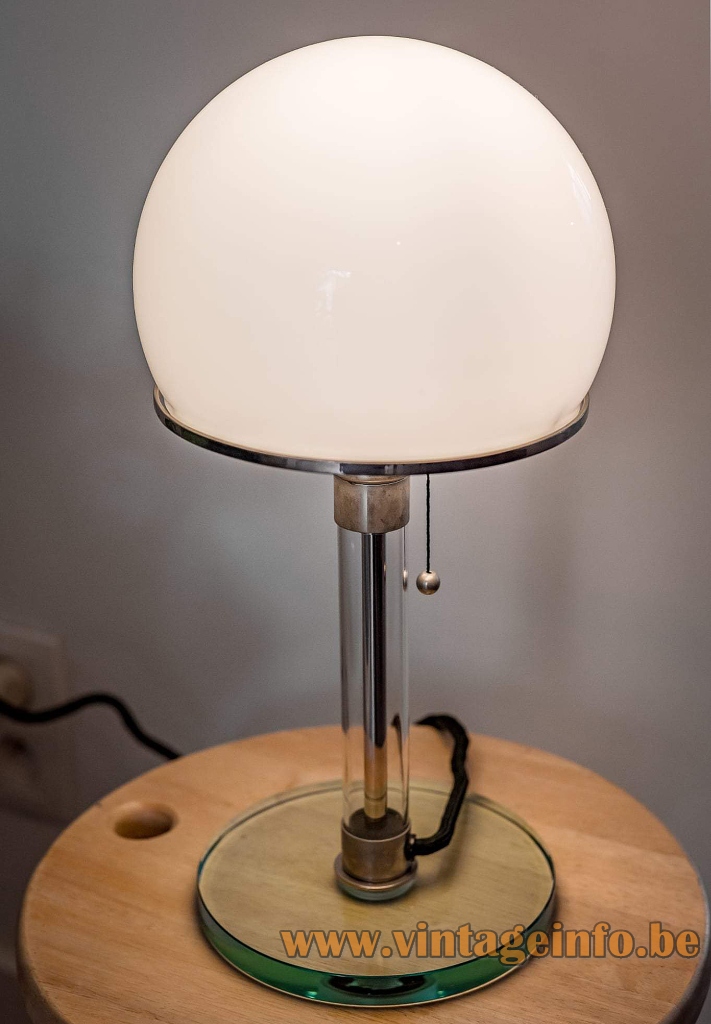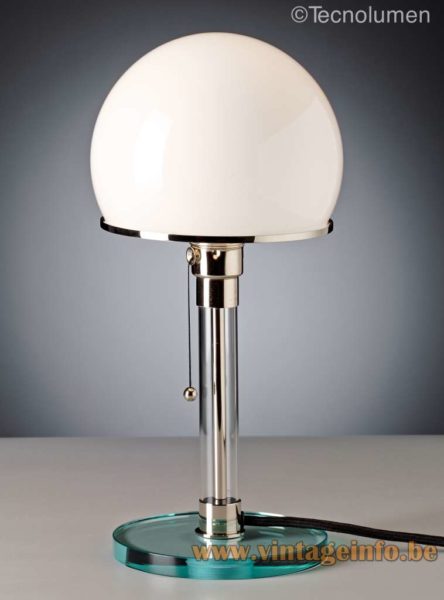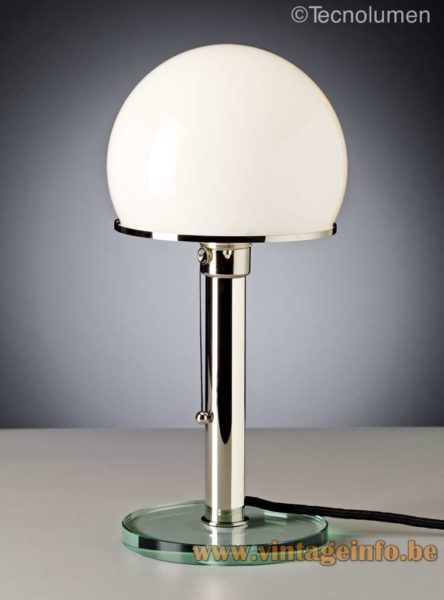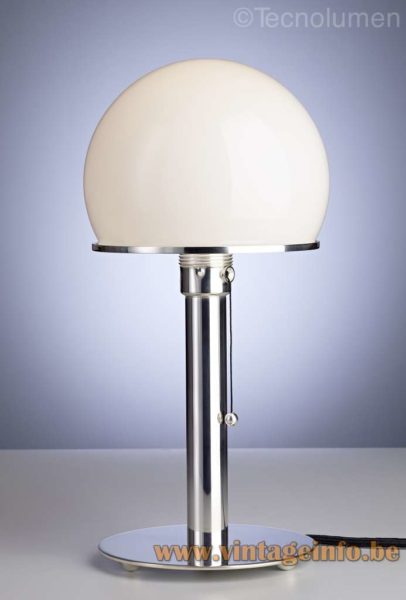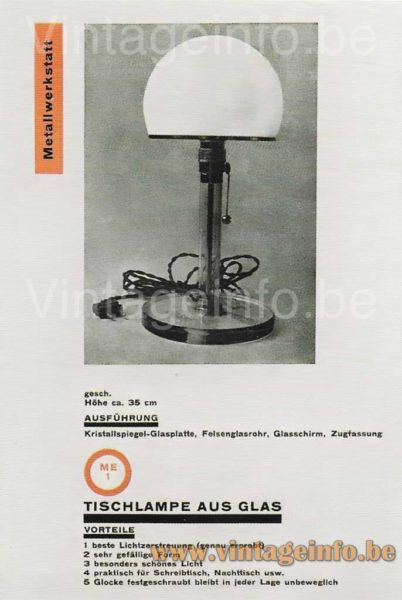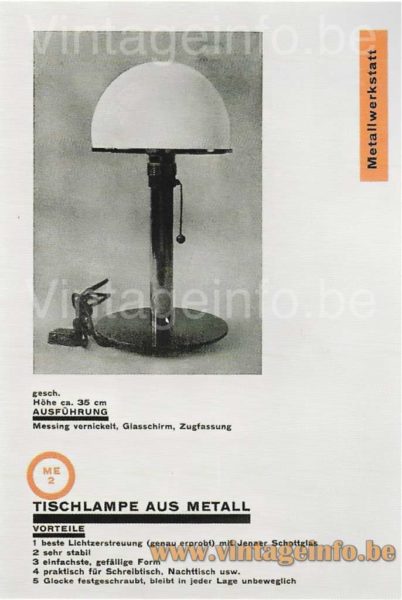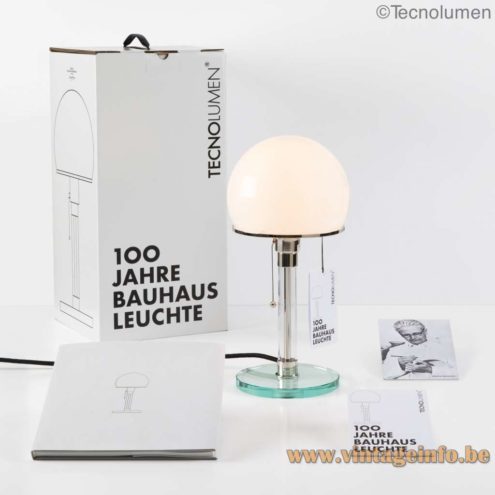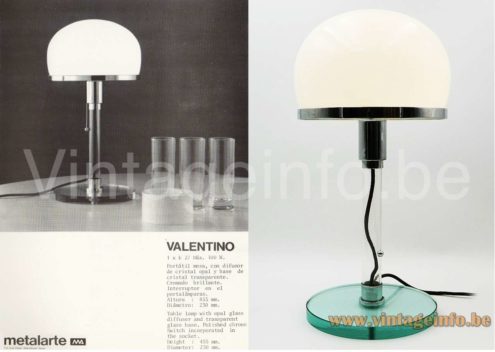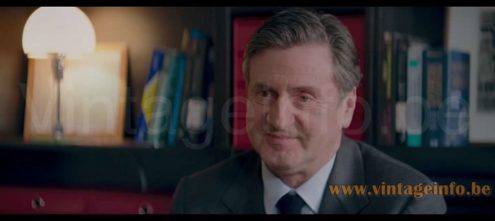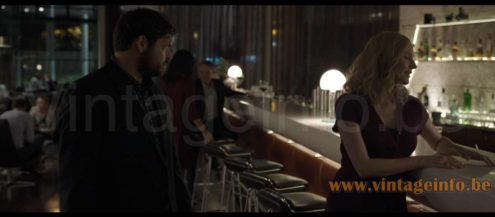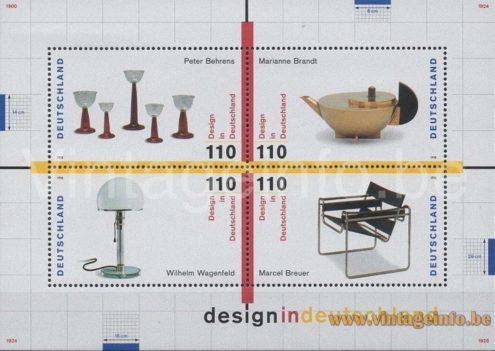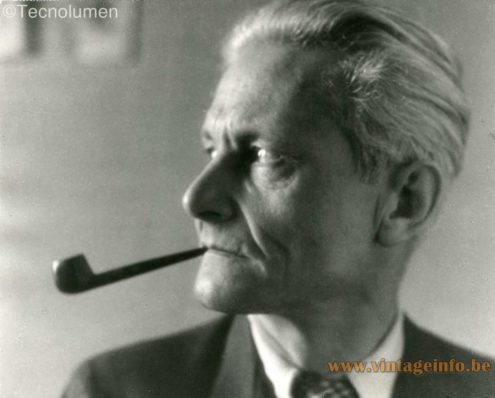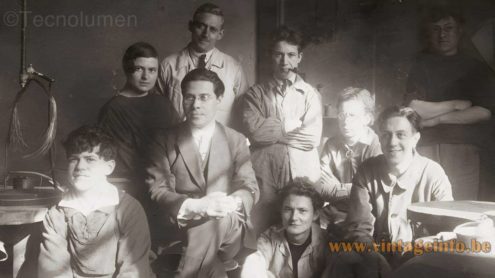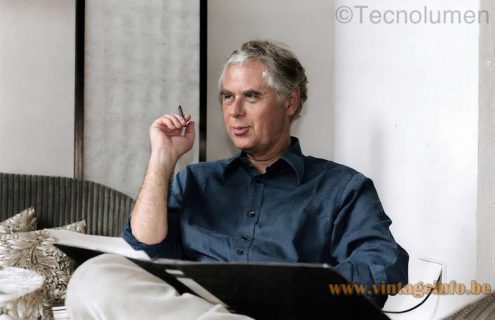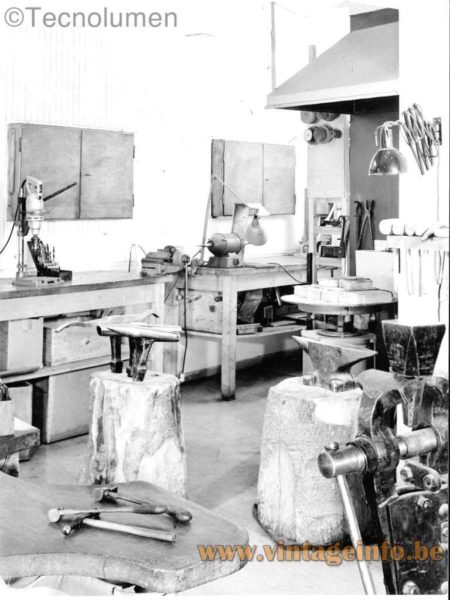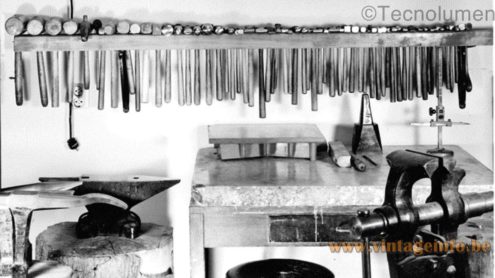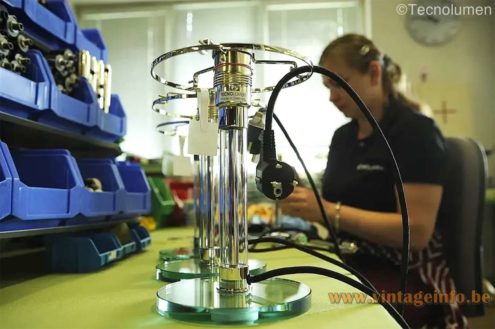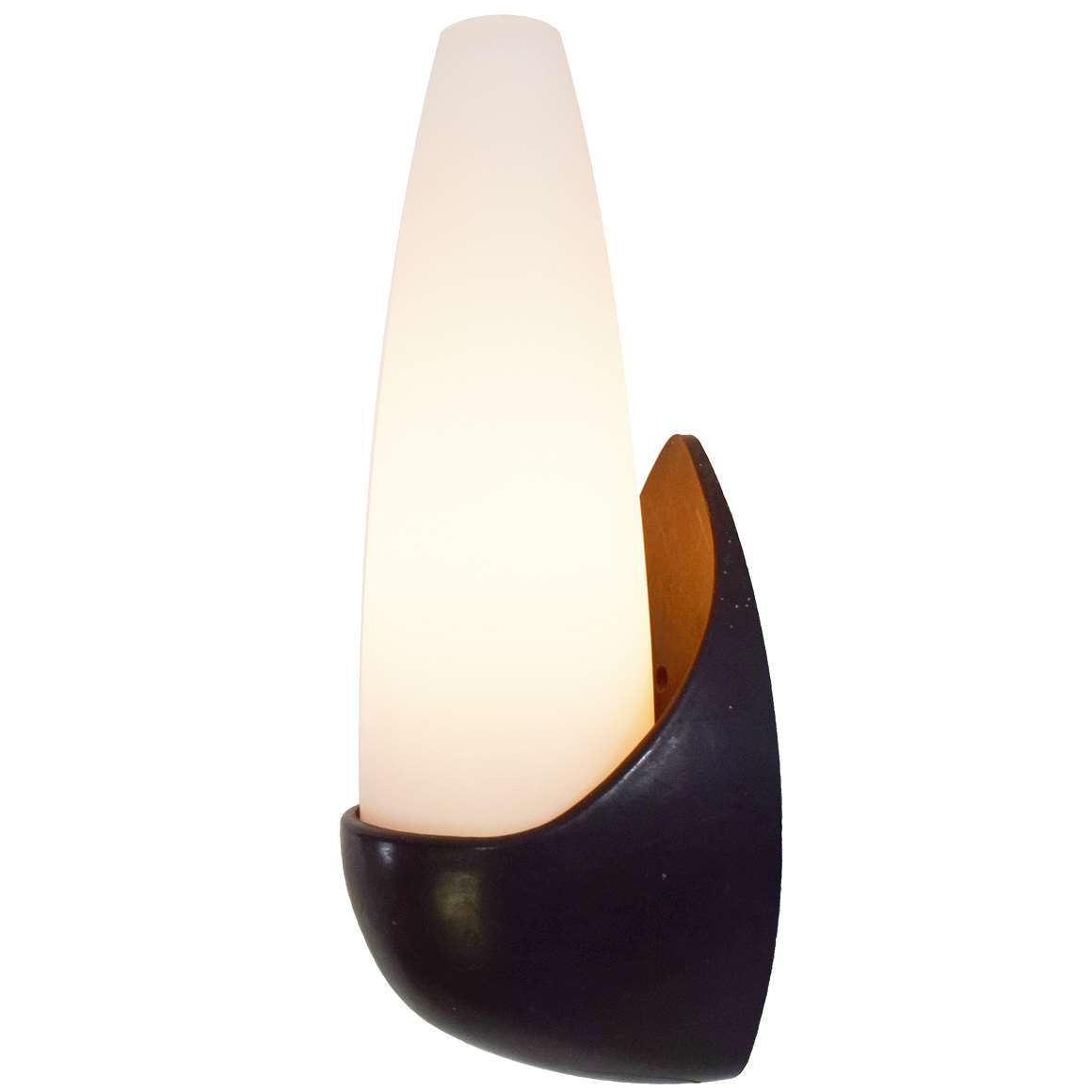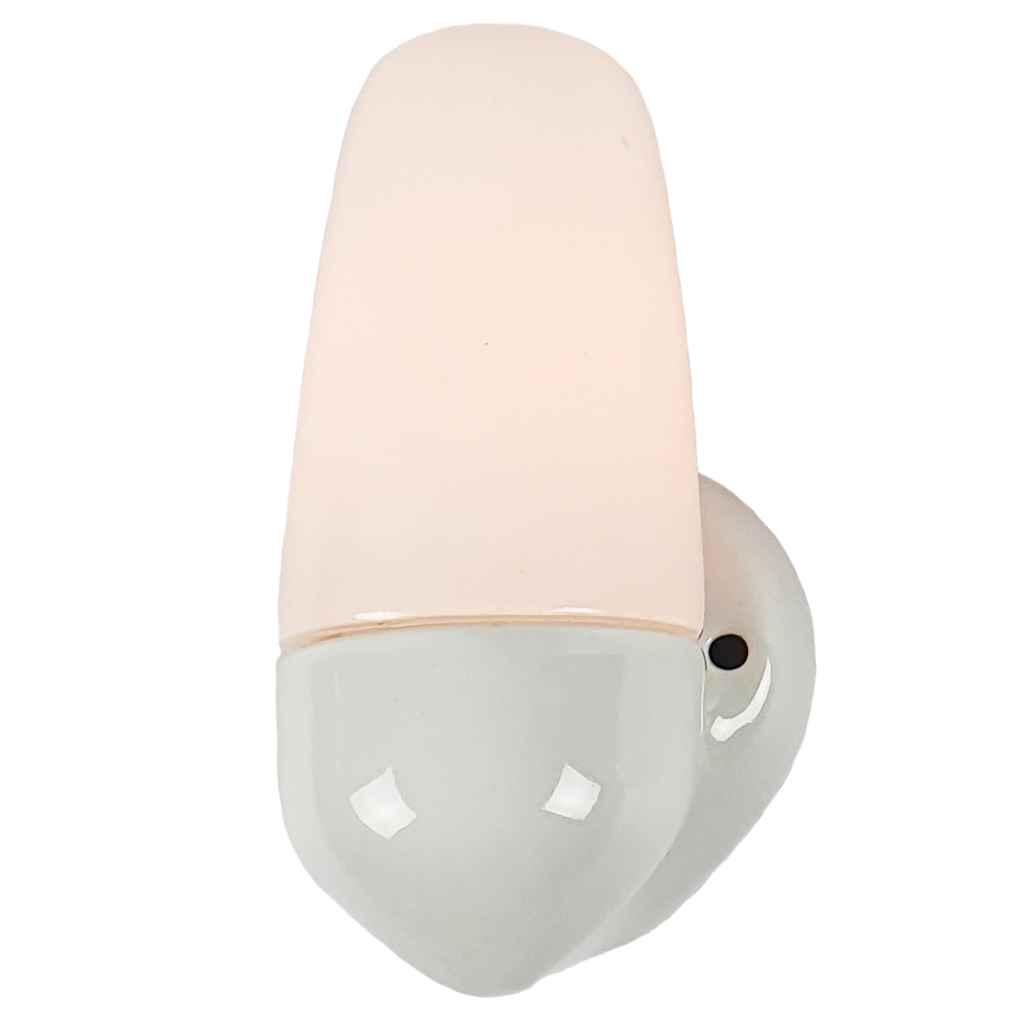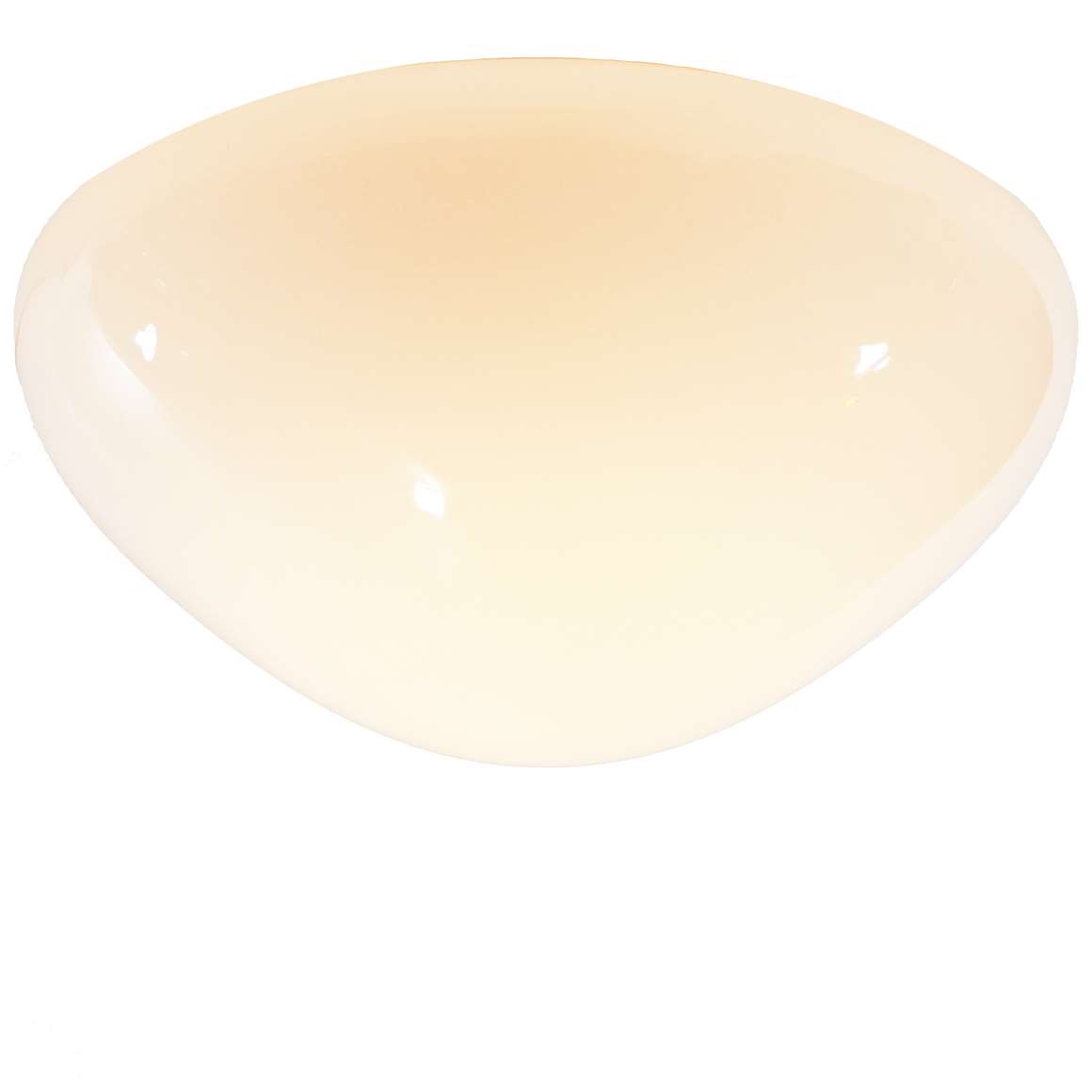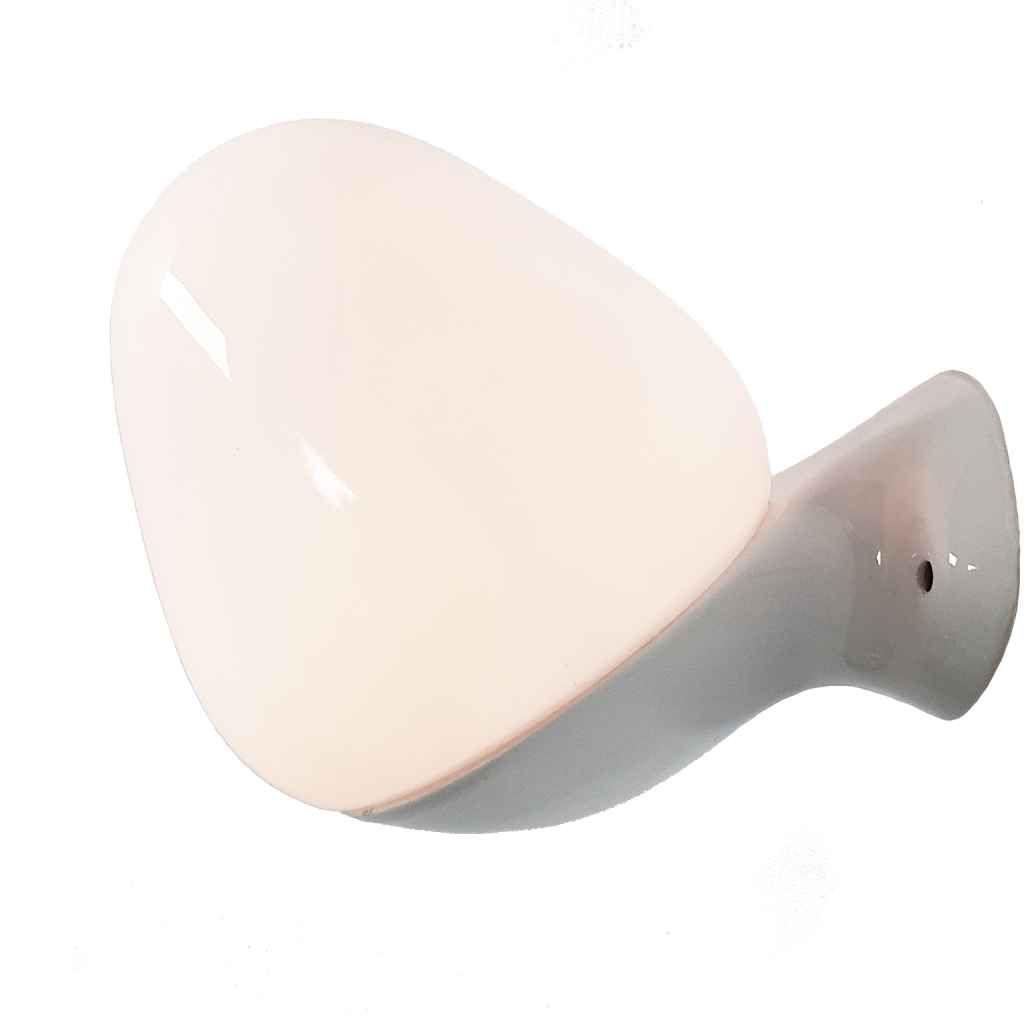Wagenfeld Bauhaus Table Lamp – Catalogue Pictures
Model WG 24 and model WG 25GL. The WG 24 model was designed in 1924.
Wagenfeld Bauhaus Table Lamp – Catalogue Pictures
Model WA 24 and model WA 23SW. The WA 24 model was designed in 1920, when Wagenfeld was 20.
Wagenfeld Bauhaus Table Lamp – ME 1 & ME 2 Catalogue Pictures
In 1919, the Bauhaus was founded in Weimar, marking the beginning of a new era in modern design and architecture. After several years of groundbreaking experimentation, the Weimar school was closed on April 1, 1925 due to political pressure, and reopened the same day in Dessau. Later that year, in November 1925, Bauhaus GmbH was established to manage and distribute the designs created in the school’s workshops.
On December 3, 1925, all rights to the Weimar school were officially transferred to the Bauhaus in Dessau, securing its legal and artistic continuity. By the autumn of 1926, Walter Gropius moved into the newly constructed Bauhaus building in Dessau — a structure that itself became an icon of modernist architecture.
Products developed there were assigned new model numbers, prefixed with the abbreviation ME. Among them were the ME 1 Glass Lamp and the ME 2 Metal Lamp, early examples of Bauhaus lighting produced in small series.
After the move to Dessau in the autumn of 1926, the Bauhaus began producing designs in small series. These models received new numbers with the prefix ME, including the ME 1 Glass Lamp and the ME 2 Metal Lamp.
Meanwhile, in Weimar, the State University of Architecture was founded on April 1, 1925 as the successor to the Bauhaus. Between 1926 and 1927, Wilhelm Wagenfeld joined the school as assistant in the metal workshop, and in 1928 he became head of the department. Under his direction, the workshop produced metal appliances, table and ceiling lamps, among them the W 1, ME 1, ME 2, and WG 24.
A sales organization for the school’s designs was established in July 1928, and from April 1929 the workshop began collaborating with outside manufacturers — Walther & Wagner in Schleiz for lighting, and S.A. Loevy in Berlin and Otto Seyffart in Altenburg for fittings. The 1929 catalogue of the Weimar school listed several of Wagenfeld’s lamps.
On April 1, 1930, the Weimar school was closed. Wagenfeld regained the copyrights to his designs and, in May 1930, presented a revised metal lamp, technically improved and with adjusted proportions.
Wagenfeld Bauhaus Table Lamp – ME 1 & ME 2 Catalogue Pictures
Wagenfeld Bauhaus Table Lamp – 100 Year Edition
Designed in 1924 at the Bauhaus in Weimar by Wilhelm Wagenfeld, the table lamp has long exemplified modern design: clear geometry, functional purpose, and restraint in materials.
To mark the centenary in 2024, Tecnolumen released a special edition. The design itself is unchanged; the anniversary model is distinguished by an etched base bearing the inscription “100 Jahre Bauhaus Leuchte – Design: Wilhelm Wagenfeld 1924” together with Wagenfeld’s original signature.
The edition was accompanied by a dedicated book by Julia Bulk, director of the Wilhelm Wagenfeld Foundation: Harmonious, Timeless, Round: The Modern Sphere. The book reflects on the lamp’s principles and its Bauhaus context, framing why the object remains a benchmark of timeless modernity.
Wagenfeld Bauhaus Table Lamp – Other Producers
Imago DP from Italy and Metalarte from Spain sold a redesigned version designed by Carl Jakob Jucker in the late 60s. Metalarte named it Valentino, as you can see in the catalogue picture below. The Italian company Egoluce made a lamp in the 80s, 90s that most closely resembles the Wagenfeld version. But even in the early years there were countless copies.
Carl Jacob Jucker
In 1967, Jucker redesigned the lamp for the Italian lighting company Imago DP. Imago DP produced another swivel table lamp, as well as a set of Jucker table and floor lamps. It has a black Bakelite lamp socket inside a chrome tube, white plastic screws to hold the lampshade and that lampshade has a slightly different form. It has no metal rod inside the tube, you can see the wire.
The glass lamp base is more green than the original. On the inside it is signed Jucker 1923 and on the other side Imago PD. This version was also sold by Metalarte from Spain. They named it Valentino, as you can see in the catalogue picture. Metalarte sold it for a very long time. You can find it with at least 3 different Metalarte labels. It has no stamps inside, but sometimes a Metalarte stamp on the chrome lamp socket holder. It exists with a white or black wire.
Controversy
The artistic authorship of the Bauhaus lamp remains controversial due to the lack of documentation. For the variant with the glass shaft, Jucker and Wagenfeld are cited in recent literature. The lamp was produced in the Bauhaus metal workshop, which had a collaborative and mass-production approach, making it difficult to assign sole authorship. This environment fostered a mix of individual design and workshop-based production, which is why both names are often associated with the final product. But, it has long been proven and legally recognized that Wilhelm Wagenfeld designed the lamp.
Wagenfeld Bauhaus Table Lamp – 1970s Metalarte Catalogue Picture
Catalogue picture of the lamp designed by Carl Jacob Jucker, sold by Imago DP from Italy and Metalarte, Spain. Metalarte named it Valentino.
Lamps In The Movies
Avant l’Hiver (2013)
A Wagenfeld Bauhaus table lamp was used as a prop in the 2013 French drama film Avant l’Hiver (Before the Winter Chill). Starring Daniel Auteuil, Kristin Scott Thomas and Leïla Bekhti.
The Operative (2019)
Several Wagenfeld Bauhaus table lamps were used as a prop in the 2019 internationally co-produced thriller film The Operative. Starring Diane Kruger, Martin Freeman and Cas Anvar.
Wagenfeld Bauhaus Table Lamp – Stamp
In 1998 Deutsche Post created 4 stamps “Design in Germany”: Peter Behrens, Marianne Brandt, Wilhelm Wagenfeld and Marcel Breuer.
Links and sources (external links open in a new window)
Wilhelm Wagenfeld Foundation website (German)
Biography of Wilhelm Wagenfeld – Wagenfeld Leuchten website
Wagenfeld | The Quiet Revolutionary of Light and Everyday Objects – Tecnolumen website
iF Design Awards for Wagenfeld designs
Development of the “Bauhaus lamp” – Wagenfeld Leuchten website (German)
The Bauhaus lamp – MoMA museum New York
Bauhaus-Leuchte – Wikipedia (only German)
Wagenfeld – Works for the Bauhaus – Wagenfeld website (German)
Carl Jakob Jucker – Wikipedia (only German)
Lamp! Design Icon in the Light of Art – interpretations – a must see – Tecnolumen website
20th annual Salon of the Société des Artistes Décorateurs – Werkbund Exhibition
Points of View: Herbert Bayer’s Exhibition Catalogue for the 1930 Section Allemande
Avant l’Hiver (2013) Film – Wikipedia
Avant l’Hiver (2013) Film – IMDb
Many thanks to Tinneke for the beautiful pictures of the lamp.
Many thanks to Tecnolumen for all the Tecnolumen photos.
Many thanks to Frank Meierdiercks, member of the board of the Wilhelm Wagenfeld House for all the help.
Many thanks to Max from AfterMidnight for the Metalarte catalogue picture.
Many thanks to Werner for some additional photos.
All Tecnolumen images are copyright ©Tecnolumen.
Wagenfeld Bauhaus Table Lamp
Materials: Round glass base with a green tinge. Nickel-plated rod. Clear glass tube. Nickel-plated lampshade holder and screws. Hand-blown opal glass lampshade. Some nickel-plated parts. Nickel-plated metal and porcelain E27 socket.
Height: 36 cm / 14.17”
Width: ∅ 18 cm / 7.08”
Base: ∅ 15,2 cm / 5.98”
Electricity: 1 bulb E27, 1 x 60 watt maximum, 110/220 volt. (7 watt LED mat)
Any type of light bulb can be used. But a white or satin bulb is preferred, it gives the best result.
Period: 1980 until now – Bauhaus – Art deco.
Designer: Wilhelm Wagenfeld in 1924.
Manufacturer: Tecnolumen GmbH & Co. KG, Lötzener Straße 2 – 4, 28207 Bremen, Germany.
Other versions: The Wagenfeld Bauhaus table lamp exists in four versions. This one is model WG 24. The other models are WA 24, it has a round nickel-plated metal base and rod. The WA 23 SW has a black metal base and a nickel-plated shaft. And the WG 25 GL has a round glass base and a nickel-plated rod.
This lamp is stamped with serial number 5002, in all probability it was made in the 1980s.
These Tecnolumen lamps are the only copyrighted re-editions authorized by Professor Wilhelm Wagenfeld. Over the years many companies made their versions of this WG 24 lamp. Beware, today copies are made in China.
Tecnolumen lamps are easily recognizable; they are stamped into the metal at the bottom with a serial number, the Tecnolumen TL logo, and the Bauhaus signet, as you can see in the pictures.
Wagenfeld Bauhaus Table Lamp – Wilhelm Wagenfeld
Wilhelm Wagenfeld was born on April 15, 1900, in Bremen, Germany. From the age of 14 to 18 he studied at Koch & Bergfeld, a silverware factory in Bremen, in the drawing department. At the same time, he attended the School of Applied Arts (Kunstgewerbeschule) in Bremen.
From 1919 onward, Wilhelm Wagenfeld studied at the drawing academy in Hanau, where he graduated as a master student under painter Reinhold Ewald.
Wagenfeld attended the famous Bauhaus art school in Weimar (founded in 1919 by architect Walter Gropius) from 1923 until 1925, where he designed his famous table lamp — often referred to as the Bauhaus lamp. Most books and literature state that Carl Jakob Jucker co-designed this lamp. This is incorrect. It has long been proven and legally recognized that Wilhelm Wagenfeld created the lamp. Today, this table lamp is produced by Tecnolumen.
Wilhelm Wagenfeld married Else Heinrich in 1925. In the same year, he filed a patent for a technical improvement of the table lamp — a glass version. He wanted to avoid conflicts of use with the Bauhaus, which continued to produce and market his lights.
In 1928 Wagenfeld took over the management of the metal workshop at the Staatliche Bauhochschule Weimar (State University of Applied Sciences), where metal appliances, table lamps and ceiling lamps were produced.
In the following years, he designed many everyday objects such as coffee pots, tea pots, glasses, kitchenware, and crockery.
World War II
In 1943 Wagenfeld was released from military service due to requests from the glass industry. In 1944 he refused to join the NSDAP (German Nazi Party) and was consequently transferred to an aviator corps on the Eastern Front as punishment. He was captured by the Russians and held as a prisoner of war for some time.
LIghting Companies
From 1953 to 1958 he designed lighting for Peill+Putzler and Heinz Neuhaus. In 1953 he also founded his own Werkstatt Wagenfeld (Wagenfeld Workshop) in Stuttgart.
His long collaboration with Lindner began in 1955 and lasted until 1970, during which he developed a comprehensive lighting program. At Lindner he also designed lamps for Systral-Leuchten, a Lindner company.
Wagenfeld also designed lights for Brunnquell Leuchten, Bünte und Remmler (BuR), and Rosenthal Leuchten. In 1978 his workshop closed, and two years later, in 1980, Tecnolumen began producing the Bauhaus lamps. Wilhelm Wagenfeld passed away in Stuttgart in 1990. His resting place is in Collex-Bossy, Switzerland.
Wilhelm Wagenfeld received numerous awards and is regarded as one of the most celebrated German designers, for instance, Wagenfeld has received 105 iF Design Awards.
Wagenfeld Bauhaus Table Lamp – At The Bauhaus
A photograph from this period shows Wilhelm Wagenfeld with a pipe in hand, his brow slightly furrowed and his gaze turned aside — as if caught mid-thought. It feels like a moment interrupted, a designer paused between ideas, perhaps already imagining a fitting, a base, or a glass form. As early as December 1923, Christian Dell noted in his workshop report that his student was “working on designs for lighting.”
Wagenfeld Bauhaus Table Lamp – Bauhaus and the Collaboration with Christian Dell
Before joining the Bauhaus, Wilhelm Wagenfeld studied metal design at the drawing academy in Hanau, where he met Christian Dell, a former Bauhaus craftsman who had become master of the metal workshop. Dell immediately recognized Wagenfeld’s potential—not just as a skilled silversmith, but as someone who could think about form and function at the same time. He introduced him to the idea that craftsmanship and art were not opposites but part of a single process, and that design could serve a social purpose.
Encouraged by Dell, Wagenfeld applied to the State Bauhaus in Weimar in October 1923. His application was supported by Dell himself, who described him as a “useful craftsman.” Because of Dell’s recommendation, Wagenfeld was admitted directly into the metal workshop, bypassing the usual preliminary course—a rare privilege that reflected both his skill and Dell’s trust in him.
At the Bauhaus, László Moholy-Nagy had recently taken over as head of the metal workshop, and Dell continued as the technical master. This combination—Moholy-Nagy’s conceptual vision and Dell’s precise craftsmanship—created the perfect environment for Wagenfeld to develop his own ideas about light, form, and function.
By early 1924, Wagenfeld was designing lighting objects that embodied the Bauhaus ideal of “Art and Technology – a New Unity.” Reports from Dell’s workshop mention Wagenfeld’s first completed pieces, including metal and glass table lamps made for the 1924 “Die Form” exhibition in Stuttgart. Among them was the glass-based lamp that would later become known as the Wagenfeld Lamp (WG 24).
The result of this period was not just an object, but a synthesis of the entire Bauhaus philosophy: clarity, reduction, and a belief that good design could illuminate everyday life—literally and metaphorically.
Wagenfeld Bauhaus Table Lamp – Production
According to the Bauhaus Archives, the first lamps were produced in spring 1924. By autumn that year, at least eighty examples with metal bases and forty-five with glass bases had been made. Production continued after the move to Dessau in 1925, and in 1928 both versions—each with slight variations—were manufactured under licence by the Berlin firm Schwintzer & Graff. In 1930, Bunte und Remmler (BuR) from Frankfurt introduced a variant, and in 1931 Wagenfeld revised his own design, which was produced by Architekturbedarf in Dresden.
During the summer of 1930, the Bauhaus lamp made an appearance at the Werkbund Exhibition in Paris. Curated by Herbert Bayer and László Moholy-Nagy, the German section of the 20th annual Salon of the Société des Artistes Décorateurs presented a version of the lamp, made by Bünte und Remmler (BuR) together with designs by Christian Dell for Kaiser Leuchten, and others.
Wagenfeld Bauhaus Table Lamp – Walter Schnepel
Collector & entrepreneur Walter Schnepel, founder of Tecnolumen.
Tecnolumen
Tecnolumen was founded in 1980 in Bremen, Germany, by art collector and entrepreneur Walter Schnepel. The company’s history began a few years earlier, in 1976, when Schnepel visited Wilhelm Wagenfeld in his studio and noticed an unused lamp standing on a shelf — the 1924 Bauhaus table lamp that would later become world-famous.
When Schnepel asked why it had never been produced again, Wagenfeld reportedly replied: “Why don’t you do it?” With Wagenfeld’s permission, Schnepel obtained the license to manufacture the lamp, which became the first product under the Tecnolumen name.
At the time, producing lamps was completely new to Schnepel, and finding reliable suppliers was difficult. The first 250 pieces were made by hand in small numbers, each detail checked and approved by Wagenfeld himself. When the first advertisement appeared in the magazines ART and Schöner Wohnen, the lamps sold out within weeks — confirming that there was genuine interest in authentic Bauhaus design. The model was designated WA 24, referring to its Bauhaus origin year.
The original Wagenfeld table lamp (WA 24) has remained in continuous production ever since. Every example carries the Tecnolumen mark and a serial number, ensuring that it follows the original proportions and materials defined by Wagenfeld. In consultation with Wagenfeld, only minimal changes were made to the design: the base radius was slightly reduced, the plate thickness adjusted, and the glass dome positioned marginally higher. Minor adjustments were made in agreement with him, mainly to adapt to changing electrical standards and materials.
Today Tecnolumen continues to produce the Wagenfeld lamp in Bremen, together with a carefully curated range of other historical and contemporary designs — including works by Marianne Brandt, Gyula Pap, and Hans Przyrembel. All lamps are assembled by hand using glass and metal components made in Germany or nearby European workshops.
In 1995, Schnepel invited 32 international artists to reinterpret the lamp as an art object, exploring its meaning beyond utility — from humorous transformations to conceptual works. You can find these designs over here, on the Tecnolumen website.
For over four decades, Tecnolumen has remained dedicated to preserving the spirit of the Bauhaus: honest materials, functional form, and lasting quality. All Tecnolumen lights are VDE -certified and numbered, with replacement parts guaranteed for decades — a principle that mirrors the Bauhaus idea of durable, functional design.
Wagenfeld Bauhaus Table Lamp – Scetch
Drawing by Wilhelm Wagenfeld for the lampshade.
Wagenfeld Bauhaus Table Lamp – Wilhem Wagenfeld Workshop
The Wilhelm Wagenfeld workshop.
Wagenfeld Bauhaus Table Lamp – At The Factory Creating New Lamps
Detail photos of the Tecnolumen workshop. The porcelain part is being placed in the socket. In the other photo the lamp is almost ready to be packed. The breakable opal glass lampshade is packed separately.





